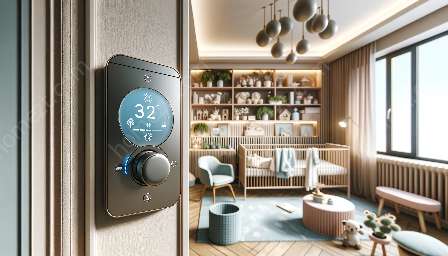As a parent or caregiver, creating a peaceful and comfortable environment for children is a top priority. One critical aspect of this is noise reduction. When combined with effective temperature control, noise reduction can contribute significantly to the overall well-being of young children in nurseries and playrooms. In this comprehensive guide, we will explore the various aspects of noise reduction that are essential for creating a tranquil and harmonious space for children, while also examining the ways in which this aligns with temperature control in these environments.
Noise Reduction in Nursery and Playroom Design
When designing a nursery or playroom, it is important to consider the impact of noise on children's comfort and well-being. Excessive noise can disrupt sleep patterns, hinder concentration, and contribute to stress and anxiety in young children. Implementing soundproofing materials, such as acoustic panels, carpets, and curtains, can significantly reduce noise levels and create a more serene environment. Additionally, strategically placing furniture and toys can help absorb and minimize sound, contributing to a quieter and more peaceful space.
Temperature Control and Noise Reduction
Temperature control in nurseries and playrooms is crucial for ensuring the comfort and safety of children. By integrating noise reduction strategies with temperature control measures, caregivers can create an optimal environment for young children to thrive. For instance, installing double-glazed windows not only helps regulate indoor temperature but also serves as an effective barrier against external noise. Similarly, using thermal curtains or blinds not only assists in maintaining a consistent temperature but also contributes to sound insulation, reducing external noise infiltration.
Practical Tips for Noise Reduction
There are several practical tips and strategies that can be employed to minimize noise pollution in nurseries and playrooms. These include:
- Strategic Furniture Placement: Arrange furniture to create natural sound barriers and reduce reverberation.
- Soft Surfaces: Incorporate soft materials such as rugs and cushions to absorb sound and minimize echo.
- Soundproofing Materials: Utilize acoustic panels, soundproof curtains, and foam tiles to minimize noise transmission.
- Noise-Free Toys: Choose toys with soft or rubberized surfaces to minimize noise during playtime.
- Door Seals and Weather Stripping: Ensure that doors and windows are properly sealed to reduce external noise infiltration.
- Noise Monitoring Devices: Implement noise monitoring technology to identify sources of excessive noise and address them effectively.
Creating a Tranquil Sanctuary for Children
By integrating effective noise reduction techniques with temperature control strategies, caregivers can create a tranquil sanctuary for children to play, learn, and rest. This harmonious environment not only supports their physical and emotional well-being but also fosters a sense of security and calm. Prioritizing noise reduction and temperature control in nursery and playroom design is an investment in creating an environment where children can thrive and flourish.
Conclusion
Creating an environment that fosters tranquility and comfort is essential for the well-being of children in nurseries and playrooms. By implementing effective noise reduction techniques in combination with temperature control measures, caregivers can cultivate a space that supports the healthy development of young children. Understanding the synergy between noise reduction and temperature control is key to establishing an environment where children can thrive, learn, and play in peace.



